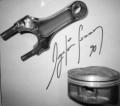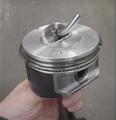Hi Folks
Can anyone offer a technical opinion on this?
I have just imported a 1991 NSX from Japan, a 20,000 mile manual, thought you might like a picture.
Looking through the history I think the car was used a bit by the first owner for 20 years, it has since done very little so probably stored somewhere for 10+ years.
The gearbox is "bauky," a bit stiff in the morning and a bit stiff when pressing on, on faster roads. So, difficult to pull the stick out of fifth and then difficult to pull into fourth, say. No crunching at all just a recalcitrant synchromesh. All seems fine at low speeds, when the synchro is not doing much.
Gearbox oil has just been changed, made no difference.
Am I seeing a symptom of long term storage? Would it be best to change the gearbox oil several times? Have you had similar problems? Does it look like a knackered synchro? Any other thoughts?
Thanks for listening! Accelera Comigo (Oliver)





 Reply With Quote
Reply With Quote


